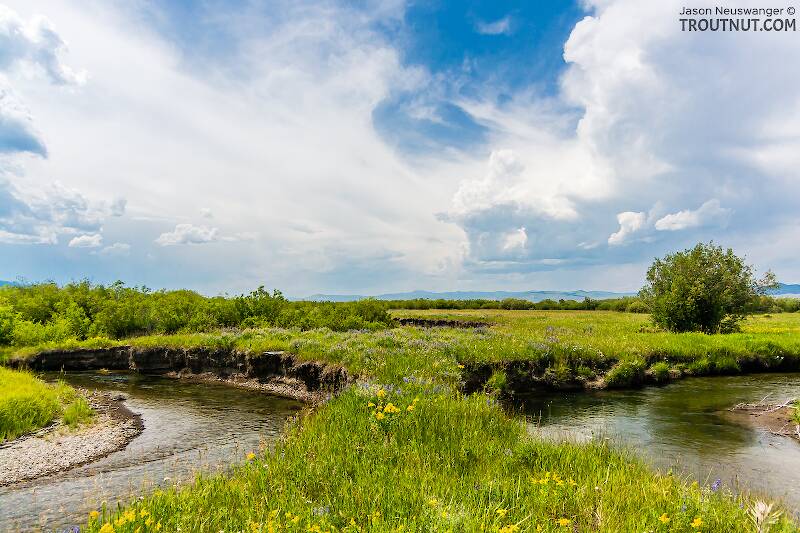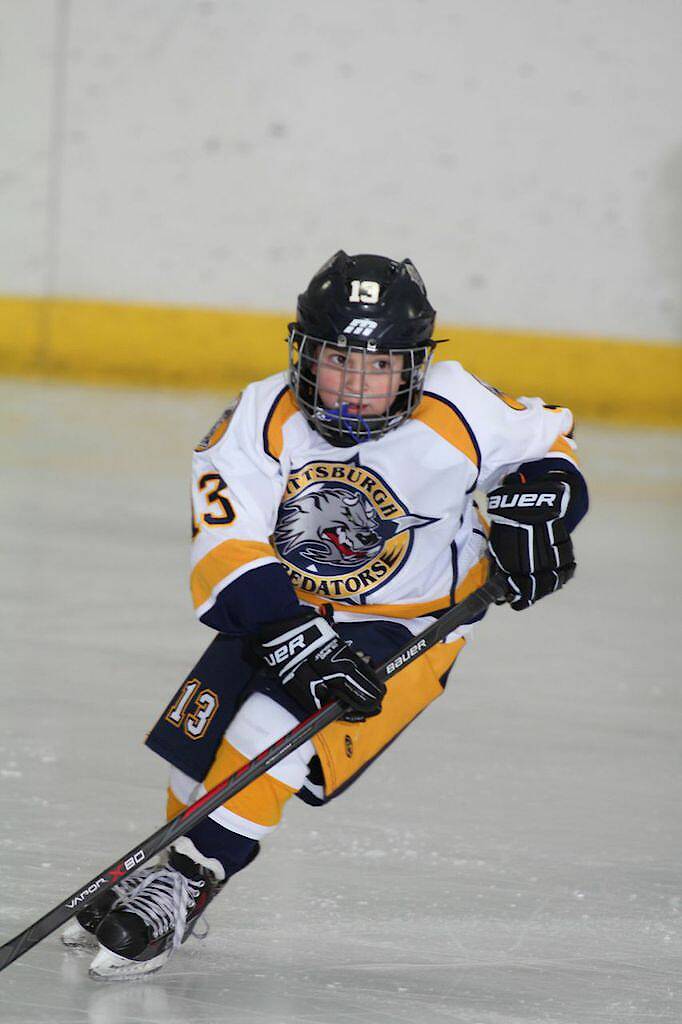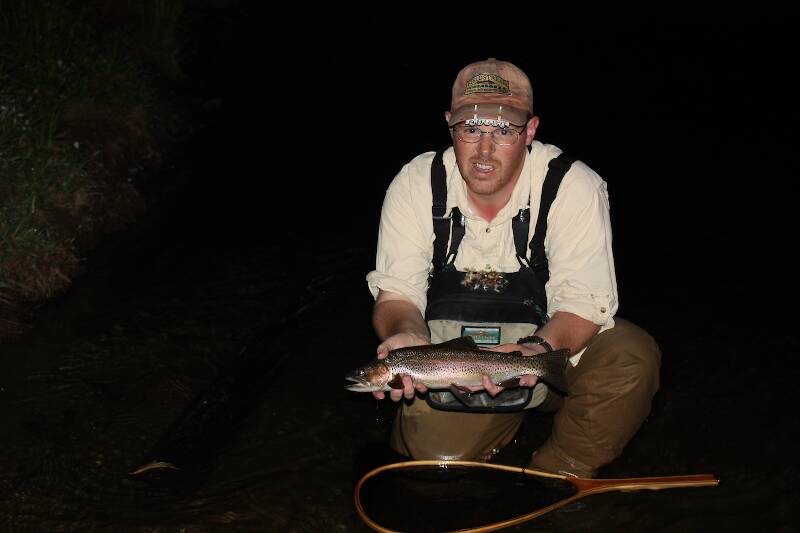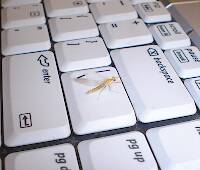
Blue-winged Olives
Baetis
Tiny Baetis mayflies are perhaps the most commonly encountered and imitated by anglers on all American trout streams due to their great abundance, widespread distribution, and trout-friendly emergence habits.
Featured on the forum

Troutnut is a project started in 2003 by salmonid ecologist Jason "Troutnut" Neuswanger to help anglers and
fly tyers unabashedly embrace the entomological side of the sport. Learn more about Troutnut or
support the project for an enhanced experience here.
Gutcutter on Feb 23, 2010February 23rd, 2010, 4:54 am EST
what is everyone's experience with these? not just fishing them but tieing them. i tie them pretty well down to #20 but have trouble with the smaller flies.
i just started working on them last season and i suspect they will become easier to tie in the small sizes with repetition.
they worked well for pmd emergers in paradise valley last summer and i am spinning up a bunch for local hatches.
whattaya think?
gut
i just started working on them last season and i suspect they will become easier to tie in the small sizes with repetition.
they worked well for pmd emergers in paradise valley last summer and i am spinning up a bunch for local hatches.
whattaya think?
gut
All men who fish may in turn be divided into two parts: those who fish for trout and those who don't. Trout fishermen are a race apart: they are a dedicated crew- indolent, improvident, and quietly mad.
-Robert Traver, Trout Madness
-Robert Traver, Trout Madness
Oldredbarn on Feb 23, 2010February 23rd, 2010, 5:10 am EST
Tony,
It's interesting that you brought this up. I have been interested in them but have never tied them. I actually sent an email to Hans Weilenmann asking him to maybe do a how-to sequence on his web page. There are a couple out there on the web.
Spence
It's interesting that you brought this up. I have been interested in them but have never tied them. I actually sent an email to Hans Weilenmann asking him to maybe do a how-to sequence on his web page. There are a couple out there on the web.
Spence
"Even when my best efforts fail it's a satisfying challenge, and that, after all, is the essence of fly fishing." -Chauncy Lively
"Envy not the man who lives beside the river, but the man the river flows through." Joseph T Heywood
"Envy not the man who lives beside the river, but the man the river flows through." Joseph T Heywood
JOHNW on Feb 23, 2010February 23rd, 2010, 9:27 am EST
Tied a ton of these last year with baetis,Hendricksons and Sulphurs in mind. Unfortunatly ma nature countered all of that and I didn't get to adequatly field test them.
From the tying side of the coin I found them relatively easy with a little practice and down to a #22. I think a gallows tool would make the procedure a littl more user friendly but I managed without.
The biggest challenge was making sure I had decent stems on my hackle. I also went to using fine tippet for my loop on the larger flies (gives me something to do with all of that leftover 7x)it is a good meld of rigidity for wrapping the hackle on with flexibility to fold the loop over
I elect to leave out the wings on my paraloops with fussy fish in mind and the thought that I am giving them one less thing to possibly be wrong. One caveat however my favorite style of fly to tie (for fishing purposes) is the standard parachute. So this was just a minor advancement on those techniques.
Check out Bob Quigley's stuff on these also. He calls them Hackle stackers but it is essentially the same thing.
JW
From the tying side of the coin I found them relatively easy with a little practice and down to a #22. I think a gallows tool would make the procedure a littl more user friendly but I managed without.
The biggest challenge was making sure I had decent stems on my hackle. I also went to using fine tippet for my loop on the larger flies (gives me something to do with all of that leftover 7x)it is a good meld of rigidity for wrapping the hackle on with flexibility to fold the loop over
I elect to leave out the wings on my paraloops with fussy fish in mind and the thought that I am giving them one less thing to possibly be wrong. One caveat however my favorite style of fly to tie (for fishing purposes) is the standard parachute. So this was just a minor advancement on those techniques.
Check out Bob Quigley's stuff on these also. He calls them Hackle stackers but it is essentially the same thing.
JW
"old habits are hard to kill once you have gray in your beard" -Old Red Barn
Gutcutter on Feb 23, 2010February 23rd, 2010, 1:11 pm EST
john
the tippet as the post is a good idea. i have been using a wisp of floating poly yarn and that is where the difficulty lies in tying the smaller patterns. there is just too much bulk, even with a small amount of post. i'll give that a try.
the hackle that i have been using are saddles about one size larger than standard.
i have been flirting with the idea of purchasing a gallows arm for my regal but really haven't seen one i like.
any suggestions??
gut
the tippet as the post is a good idea. i have been using a wisp of floating poly yarn and that is where the difficulty lies in tying the smaller patterns. there is just too much bulk, even with a small amount of post. i'll give that a try.
the hackle that i have been using are saddles about one size larger than standard.
i have been flirting with the idea of purchasing a gallows arm for my regal but really haven't seen one i like.
any suggestions??
gut
All men who fish may in turn be divided into two parts: those who fish for trout and those who don't. Trout fishermen are a race apart: they are a dedicated crew- indolent, improvident, and quietly mad.
-Robert Traver, Trout Madness
-Robert Traver, Trout Madness
JOHNW on Feb 24, 2010February 24th, 2010, 8:07 am EST
Gut,
THe tippet will make a huge difference for you!
I've never actually tried a gallows tool. For paracutes I generally use a long synthetic fiber that I wrap up from under the shank. On the paraloops I worked out a method where the loop is around my little finger and I used a modified one hand tech with a rotary hackle pliers.
I can'really describe it as just to look at it folks are certain I must be triple jointed.
JW
THe tippet will make a huge difference for you!
I've never actually tried a gallows tool. For paracutes I generally use a long synthetic fiber that I wrap up from under the shank. On the paraloops I worked out a method where the loop is around my little finger and I used a modified one hand tech with a rotary hackle pliers.
I can'really describe it as just to look at it folks are certain I must be triple jointed.
JW
"old habits are hard to kill once you have gray in your beard" -Old Red Barn
Quick Reply
Related Discussions
Topic
Replies
Last Reply







